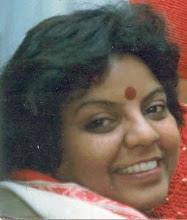

An end of the century art review by Nirupama Dutt
The dancing girl fetched out of the excavations of the Idus Valley civilization, the frescoes in the Ajanta caves, the temples of the South and tribal artists scattered in different places tell that the story of Indian art is as old as the Indian civilization. But it is this century which ends in a day which has given a distinct character to the Indian brush. It is the modern artist who comes centre stage with a vision born of the encounter of the east witgh the West to what Steven Connor said was ``Discovery or rediscovery of those real intensities of experience which had for long been concealed or distorted by false structures of under-standing’’.
The turn of the century sees the rise of the Bengal School which ironically was born under the guidance of E.B. Havell, Principal, Government School of Art, Calcutta. This was the time of the celebrated Abanindranath Tagore and Nand Lal Bose. Rejecting the British influences, they struggles to evolve a synbthesis of the Asian techniques to arrive at the Indian idiom. Commenting on the early work by Abanindranath, wrote Benode Behari Mukherjee, ``He has indeed, effected a fusion of western and oriental techniques to evolve a new style of painting’’. But it is the painter-poet Rabindranath Tagore who is recognised as first of the Indian moderns and it was he who said, ``Art is the response of man’s creative soul to the call of the real’’. The real can also be taken as one opposed to the rich and romantic paintings by Raja Ravi Varma of the princely state of Travancore in Kerala.
Interestingly, in an international volume 20th century Art, the only Indian artist to get a place is Rabindranath who the nation knows better as the poet. International prices for his work have always been higher than others and not just because they are a part of national treasure. Trying to place him in the right context Satyasri Unkil says, ``Rabindranath was an auto-didactic artist. Yet the nonformality of being self taught was a boon rather than a hindrance for his art is figurative, but he uses effects which are usually out of bounds for formally trained artists’’. It is a unique vision which marks for the painter-poet a special place in art.
The other artist who made a remarkable impact on modern Indian art and many contemporary artists still consider it flattering to count as one of the influences on them is Amrita Sher-Gil who arrived on the Indian art scene in the mid-1930s. Born of Indo-Hungarian parentage, Amrita combined a European education and an intense Indian experience. In a seven-year creative span, she painted Indian life and ensured for herself a place for all times with one room in the National Gallery of Modern Art in New Delhi specially reserved for her paintings. Her beauty, individuality and freedom went into making the Amrita Sher-Gil legend and she is one of the most cherished icons of the century. In a critique on her work, art historian Geeta Kapur writes, ``Her art language involved the use of indigenous resource in the context of her nascent sympathy of the modernizing nation; she hoped to use it as a critical reflex against her personal narcissism’’.
However, it is Maqbool Fida Husain of the progressive group who makes the most significant impact in modern art in post-Independence India and gives to the artist a stature that was not known before. Whatever be the reservations about Husain’s idiosyncracies which have included going barefoot to a prestigious club and making news, having a post-menopause romance with film star Madhuri Dixit or painting Indira Gandhi as Durga, his importance in popularizing modern art in a combination of a felicity with line and great showmanship cannot be denied starting at a cinema hoarding artist, Husain remains the most in artist at the age of 84 when the century ends paving the way for many a new stroke for the Indian brush.

the real master of contemporary art his name is Sir. Ravindra nath..
ReplyDelete